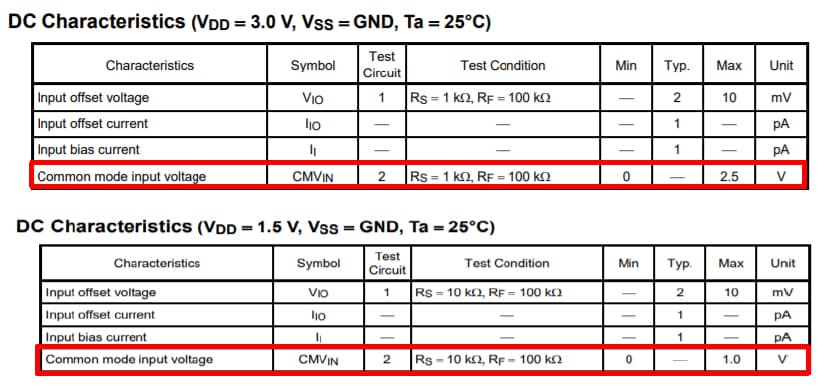- 半導體首頁
-
應用Automotive
Body Electronics
xEV
In-Vehicle Infotainment
Advanced Driver-Assistance Systems (ADAS)
Chassis
IndustrialInfrastructure
BEMS/HEMS
Factory Automation
Commercial Equipment
Consumer/PersonalIoT Equipment
Healthcare
Wearable Device
Mobile
Computer Peripherals
-
產品車用元件
Discrete Semiconductor
Diodes
電晶體
通用邏輯IC
Analog Devices
Digital Devices
Wireless Devices
※
: Products list (parametric search)
功率半導體※
: Products list (parametric search)
隔離器/固態繼電器Photocouplers
Digital Isolators
※
: Products list (parametric search)
MOSFETsIGBTs/IEGTs雙極性電晶體※
: Products list (parametric search)
Diodes※
: Products list (parametric search)
微控制器馬達驅動 ICs智能功率 ICs※
: Products list (parametric search)
電源管理 ICs線性 ICs※
: Products list (parametric search)
通用邏輯 ICs線性影像感測器其他產品其他產品
※
: Products list (parametric search)
-
開發/設計支援
開發 / 設計支援
-
技術知識
- 購買管道
- 型號 & 關鍵字搜尋
- 交叉搜尋
- 參數搜尋
- 線上庫存查詢跟購買
This webpage doesn't work with Internet Explorer. Please use the latest version of Google Chrome, Microsoft Edge, Mozilla Firefox or Safari.
型號需要超過三個文字以上 Search for multiple part numbers fromhere.
The information presented in this cross reference is based on TOSHIBA's selection criteria and should be treated as a suggestion only. Please carefully review the latest versions of all relevant information on the TOSHIBA products, including without limitation data sheets and validate all operating parameters of the TOSHIBA products to ensure that the suggested TOSHIBA products are truly compatible with your design and application.Please note that this cross reference is based on TOSHIBA's estimate of compatibility with other manufacturers' products, based on other manufacturers' published data, at the time the data was collected.TOSHIBA is not responsible for any incorrect or incomplete information. Information is subject to change at any time without notice.
型號需要超過三個文字以上
Are there any considerations for using an op-amp at low voltage?

When operating an op-amp at low voltage, you should take common-mode input voltage, a reduction in the signal-to-noise (S/N) ratio, and a slew rate into consideration. In particular, common-mode input voltage requires careful consideration.
1.Common-mode input voltage (CMVIN)
Check the datasheet for the common-mode input voltage range (i.e., the input voltage range in which an op-amp produces a normal output).
A non-rail-to-rail op-amp does not function properly when an input voltage is in the range between the maximum common-mode input voltage and VDD. This range is almost constant regardless of the supply voltage.
As an example, the following shows part of the DC Electrical Characteristics table given in the datasheet for the TC75S51 op-amp.
The input voltage range in which this op-amp cannot be used is fixed at 0.5 V whether VDD is 3 V or 5 V. When VDD = 1.5 V, it can be used with an input voltage in the range from GND to 1 V. As demonstrated by this example, the ratio of the valid input voltage range to VDD decreases as VDD decreases.
If the common-mode input voltage of a typical op-amp does not meet your requirement, use a rail-to-rail op-amp.
2.Reduction in the S/N ratio
This issue is related to the common-mode input voltage. The maximum input voltage that can be applied to an op-amp decreases as its supply voltage decreases. Therefore, assuming that the amount of noise applied to an op-amp remains constant, the S/N ratio decreases with the supply voltage. However, you do not need to be concerned about the deterioration of the S/N ratio if the input signal level is low and there is no need to reduce the signal amplitude.
If the S/N ratio is unsatisfactory, consider using a low-noise op-amp.
3.Reduction in the slew rate
The predominant factors that determine the slew rate of an op-amp are the parasitic capacitance of its internal signal lines and the amount of current that flows to charge and discharge this parasitic capacitance. As the supply voltage decreases, the internal current tends to decrease. Although op-amps are designed in such a manner that their internal current is not affected by the supply voltage, it still varies slightly with the supply voltage. Therefore, the slew rate tends to decrease with the supply voltage.
If the slew rate is unsatisfactory, consider using an op-amp with a high slew rate.
Related Links
The following documents also contain related information:
- Parametric Search : Operational Amplifier ICs and Comparator ICs
- Parametric Search : Input and output full range
- FAQs : What is the purpose of using a differential amplifier such as an op amp? (Common-mode rejection ratio: CMRR)
- FAQs : Is there any way to amplify a signal with a voltage close to the power supply level?
- FAQs : What does rail-to-rail mean (Rail-to-Rail Op amp) ?
- Application Notes : Basics of Operational Amplifiers and Comparators (PDF:1.08MB)
- Mini catalog : Introduction to Op amps Comparators (PDF:600KB)



